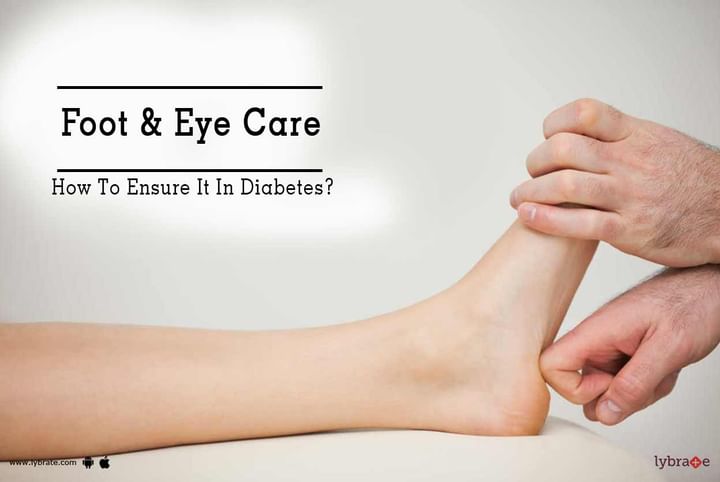Foot & Eye Care - How To Ensure It In Diabetes?
Diabetes can wreak havoc on the eye and the foot. Proper care is necessary in order to refrain from any serious consequences. It can damage the blood vessels and the nerves of the feet resulting in numbness and permanent disability. Some of the alarming foot symptoms include bruises, cuts, cracked skin and hard spots. Some of the common measures that need to be taken for foot include checking the temperature sensation of the foot by immersing it in hot water, drying the feet gently in between the toes and using agents such as lotion, lanolin, and petroleum jelly.
Some of the other preventive measure includes-
- Cutting the nails when they are young and straight to ensure no injury to the foot takes place. It should be ensured the toe is not touched by the nail of the toe. A pumice stone can be used to get rid of the corns immediately after a bath. No medicated pads or sharp razors should be utilised to cut corns. The feet should be soaked in warm water before trimming nails.
- A shoe should be put on at all times to save the feet. The shoe sole should be thoroughly checked for foreign objects such as stones and nails to ensure that the foot is not hurt. Tight shoes should be strictly avoided in order to refrain from soreness and blisters. Dry and clean socks should be put up to ensure the foot is clean. For people living in cold area, wearing thick socks should be practised. This will help the foot protect from cold. Finally, a doctor should be called in case there are any visible signs of swelling, redness, cracks, pain or sensation of burning.
- Too much blood sugar can cause harm to the eye in four ways: It can cause damage to the retina, lens, optic nerve and vitreous gel. There could be serious repercussions of diabetes to the eye including low vision and complete loss of vision. Diabetes blocks the retina and is capable of cutting off the total supply of oxygen.
Some of the common symptoms of retina related problems include double vision, pressure in one eye, problems in corner vision, flashing lights, pain in the eye, blank spots etc. A simple check-up by an oculist can reveal any eye problems related to diabetes.
An ophthalmologist can treat the diabetes-related eye problem by medicine that blocks the protein responsible for fluid leakage and blood vessel growth. He can also go for laser treatment to treat macular edema. Even scatter laser treatments are also used for this purpose. If all else fails a doctor chooses to perform a procedure known as vitrectomy.



+1.svg)
